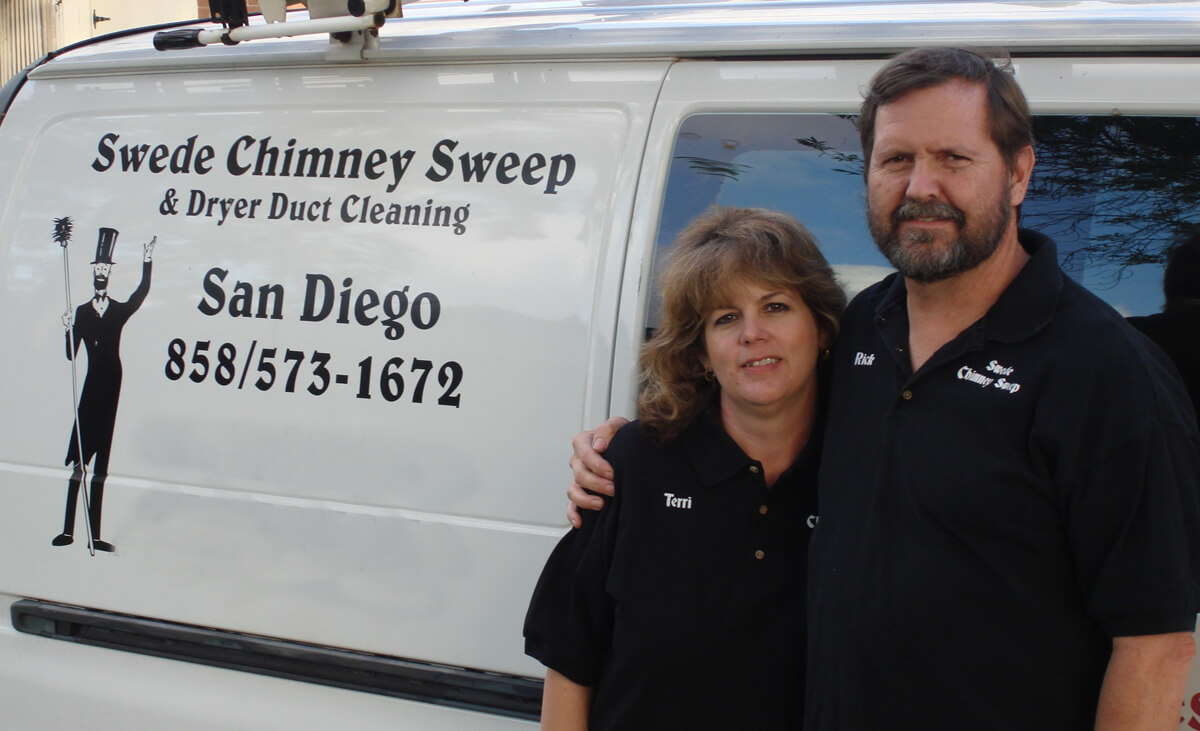Invariably, during the spring and summer months, we get the phone calls from panicked people several times a week–people seeing bees swarming around the top of the chimney or, in many cases, coming into the house through the fireplace!
We are not licensed nor trained to remove the bees or the beehive, but we can offer some advice on what you can possibly do to keep them out of your chimney in the future.
I’ve Got Bees In My Chimney! What Do I Do?
Bees generally swarm during the spring and summer months and they tend to swarm in the heat of the day. Watch this video that deals with an active beehive in a chimney in Northern California. And no, this is not our company!
If you catch a swarm of bees within the first hour or two, before they start building a hive, the best thing to do is start a fire immediately, even if it’s 100 degrees outside.
If you wait more than a few hours, the bees will have had time to build a hive. Then, if you light the fire, you may smoke out your house and melt the hive into nothing but a puddle of melted wax and honey.
This melted wax and honey will land behind the damper in an area called the smoke shelf where it’s very difficult to remove.
Once you’ve had a problem with bees, you will be more likely to continue having a problem with bees because bees leave behind pheromones. Even if a hive is removed, the pheromones are left behind to attract future bees.
When finding a bee company, make sure that they REMOVE the hive and not simply kill the bees, leaving the hive behind. We do not have the equipment nor the training to remove bee hives.
Ideally, if at all possible, ask if the bee hive can be re-located instead of killed. Bees are an important part of the eco-system and food chain. We need bees in order to pollinate our food crops. Killing a hive when it can be relocated instead is better for everyone.
Make sure that the bee company removes the hive GOING UP. Do not allow them to push the bee hive down. Pushing the hive down shoves it into the offset area behind the damper (known as the smoke shelf), which makes it almost impossible to remove. This may also completely block the damper so that the damper can’t open to access the dead bee hive.
Another reason why you don’t want to leave the hive in the chimney or have the melted hive in the smoke shelf behind the damper is that you may get an annoying pest called waxworms and bee moths. These pests will attack the melted wax and honey.
Don’t allow the bee company to install fine mesh screen material over the top of the chimney. This fine mesh screen is against code and can create a dangerous situation for the homeowner if they use the fireplace. Bees can get into any area as small as 1/4″, but in California, building code requires that the screen be 5/8″ which will allow bees to enter the chimney. Fine-mesh screen causes major smoking problems, which can cause smoke damage to your furniture, carpeting, window coverings and walls. Also, many bee companies will “mortar in” the screen at the top which makes it impossible for us to clean the chimney. A compromise with a masonry chimney is installing a top sealing damper which closes off the top of the chimney flue and helps prevent bees from entering the chimney.
In a prefab chimney system, installing screening material over the top of the chimney may cause the prefab system to overheat. No modifications can be made to a prefab system including putting screening material over the top.
Unfortunately, since a prefab system cannot be modified against the manufacturer’s specifications, a top sealing damper can’t be installed on this type of system.
If you see bees at the top of your chimney or you see the bees coming down your chimney, address the bee problem immediately. The bee hive won’t go away on its own; it just gets bigger and more expensive to remove.
Install a Top Sealing Damper
If the bees are coming into your masonry chimney, a top sealing damper can usually be the best deterrent. When the damper plate at the top is tightly sealed against the assembly’s thick rope gasket, it’s very difficult for the bees to get in.
While it is not impossible for a determined bee to somehow get past the top-sealing damper plate, the likelihood is that you won’t see them in the house or buzzing in the chimney anymore!
Please make sure and visit our webpage on Top Sealing Dampers to learn more about them and to view pictures of what they look like installed.
